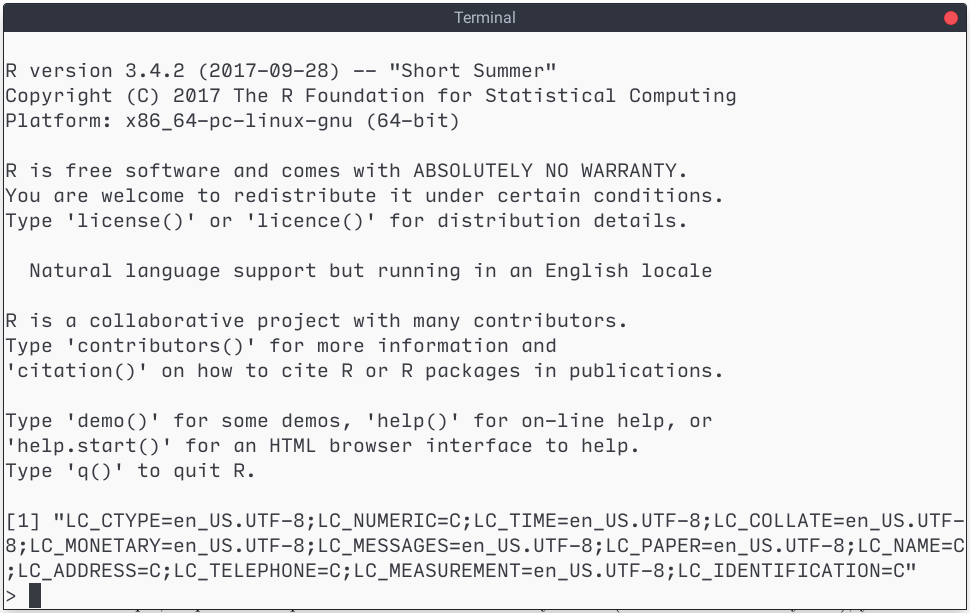As I mentioned earlier, R is an interpreted language. When you enter an expression into the R console or execute an R script in your operating system's terminal, a program called the interpreter parses and executes the code. Other examples of interpreted languages are Lisp, Python, and JavaScript. Unlike C, C++, and Java, R doesn't require you to explicitly compile your programs before you execute them.
All R programs are composed of a series of expressions. The interpreter begins by parsing each expression, substituting objects for symbols where appropriate, evaluates them, and finally return the resulting objects. We will define each of these concepts in the following sections, but you should understand that this is the basic process through which all R programs go through.
The R console is the most important tool for using R and can be thought of as a wrapper around the interpreter. The console is a tool that allows you to type expressions directly into R and see how it responds. The interpreter will read the expressions and respond with a result or an error message, if there was one. When you execute expressions through the console, the interpreter will pass objects to the print() function automatically, which is why you can see the result printed below your expressions (we'll cover more on functions later).

If you've used a command line before (for example, bash in Linux of macOS or cmd.exe in Windows) or a language with an interactive interpreter such as Lisp, Python, or JavaScript, the console should look familiar since it simply is a command-line interface. If not, don't worry. Command-line interfaces are simple to use tools. They are programs that receive code and return objects whose printed representations you see below the code you execute.
When you launch R, you will see a window with the R console. Inside the console you will see a message like the one shown below. This message displays some basic information, including the version of R you're running, license information, reminders about how to get help, and a Command Prompt.
You should note that, by default, R will display a greater-than sign (>) at the beginning of the last line of the console, signaling you that it's ready to receive commands. Since R is prompting you to type something, this is called a Command Prompt. When you see the greater-than symbol, R is able to receive more expressions as input. When you don't, it is probably because R is busy processing something you sent, and you should wait for it to finish before sending something else.
For the most part, in this book we will avoid showing such command prompts at all, since you may be typing the code into a source code file or directly into the console, but if we do introduce it, make sure that you don't explicitly type it. For example, if you want to replicate the following snippet, you should only type 1 + 2 in your console, and press the Enter key. When you do, you will see a [1] 3 which is the output you received back from R. Go ahead and execute various arithmetic expressions to get a feel for the console:
> 1 + 2 [1] 3
Finally, you should know that the console provides tools for looking through previous commands. You will probably find that the up and down arrow keys are the most useful. You can scroll through previous commands by pressing them. The up arrow lets you look at earlier commands, and the down arrow lets you look at later commands. If you would like to repeat a previous command with a minor change, or if you need to correct a mistake, you can easily do so using these keys.






































































